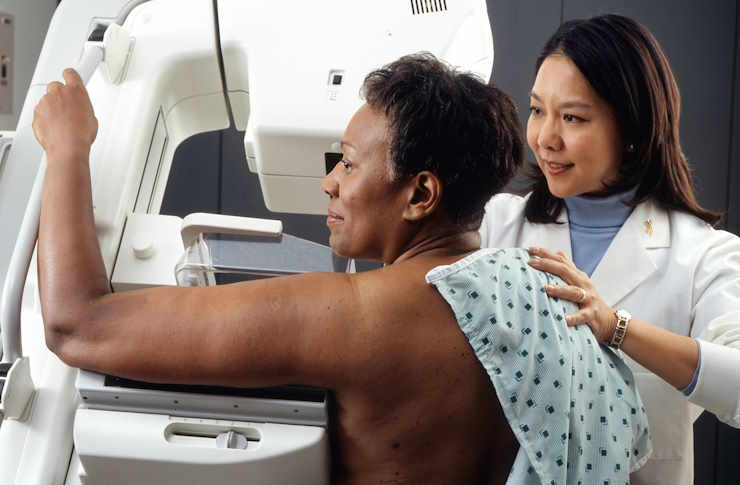Understanding Estrogen-Related Breast Cancer: Causes, Symptoms, Treatments
Breast cancer influenced by estrogen, often referred to as estrogen receptor-positive breast cancer, is one of the most common types of breast cancer diagnosed worldwide. This form of cancer is characterized by the presence of estrogen receptors on cancer cells, meaning that the hormone estrogen can promote their growth. To understand this condition more clearly, it is useful to look at its causes, symptoms, treatment options, and the role of lifestyle management in supporting patient well-being.

Breast cancer linked to estrogen represents approximately 70-80% of all breast cancer cases, making it the most common subtype of this disease. The relationship between estrogen hormones and cancer cell growth creates unique challenges and opportunities in both prevention and treatment strategies.
What Causes Estrogen Positive Breast Cancer
Estrogen positive breast cancer develops when cancer cells have receptors that bind to estrogen hormones, fueling their growth and multiplication. Several factors increase the risk of developing this cancer type, including prolonged exposure to estrogen throughout a woman’s lifetime. Early menstruation, late menopause, never having children, or having a first child after age 30 can extend estrogen exposure periods. Additionally, hormone replacement therapy, certain birth control methods, and genetic predispositions contribute to increased risk levels.
Recognizing Estrogen Breast Cancer Symptoms
Early detection significantly improves treatment outcomes for estrogen-driven breast cancers. Common symptoms include new lumps or thickening in the breast or underarm area, changes in breast size or shape, skin dimpling or puckering, nipple discharge or inversion, and persistent breast or nipple pain. Unlike some aggressive cancer types, estrogen positive tumors often grow slowly, making regular screening mammograms and self-examinations crucial for early identification.
Hormone Therapy for Estrogen Positive Breast Cancer Options
Hormone therapy serves as a cornerstone treatment for estrogen positive breast cancer, working by blocking estrogen’s ability to fuel cancer cell growth. Selective estrogen receptor modulators like tamoxifen bind to estrogen receptors, preventing natural estrogen from reaching cancer cells. Aromatase inhibitors reduce estrogen production in postmenopausal women by blocking the enzyme that converts other hormones into estrogen. Treatment duration typically ranges from 5-10 years, depending on individual risk factors and cancer characteristics.
Estrogen Blocker for Breast Cancer Medications
Several categories of estrogen-blocking medications provide effective treatment options for hormone-positive breast cancers. Tamoxifen remains the gold standard for premenopausal women and can be used in postmenopausal patients. Aromatase inhibitors including anastrozole, letrozole, and exemestane offer alternatives for postmenopausal women. Newer medications like fulvestrant provide options for advanced cases or when other treatments lose effectiveness. Each medication carries specific side effects and considerations that healthcare providers evaluate when creating personalized treatment plans.
Estrogen Positive Breast Cancer Treatment Cost Considerations
Treatment costs for estrogen positive breast cancer vary significantly based on cancer stage, treatment duration, and geographic location. Initial diagnostic procedures including biopsies and imaging typically range from $3,000-$8,000. Surgical interventions like lumpectomy or mastectomy can cost $15,000-$50,000 without insurance coverage. Hormone therapy medications represent ongoing expenses, with monthly costs varying by medication type and insurance coverage.
| Treatment Type | Provider/Medication | Cost Estimation |
|---|---|---|
| Tamoxifen (Generic) | Various Pharmacies | $20-$100/month |
| Anastrozole (Generic) | CVS, Walgreens, Costco | $15-$80/month |
| Letrozole (Brand) | Specialty Pharmacies | $200-$400/month |
| Oncology Consultation | Cancer Treatment Centers | $300-$800/visit |
| Mammography Screening | Imaging Centers | $150-$300/exam |
Prices, rates, or cost estimates mentioned in this article are based on the latest available information but may change over time. Independent research is advised before making financial decisions.
Treatment Success Rates and Prognosis
Estrogen positive breast cancer generally carries a more favorable prognosis compared to hormone-negative types, particularly when detected early. Five-year survival rates exceed 90% for localized estrogen positive breast cancers. The slower growth pattern characteristic of these tumors often allows for less aggressive treatment approaches while maintaining excellent outcomes. However, the risk of late recurrence remains a consideration, making long-term hormone therapy and regular monitoring essential components of comprehensive care.
Understanding estrogen-related breast cancer empowers patients to participate actively in their healthcare decisions and recognize the importance of regular screening. While this diagnosis can feel overwhelming, the availability of effective hormone-blocking treatments and generally favorable outcomes provide hope and direction for treatment planning. Working closely with oncology teams ensures access to the most current treatment options and personalized care approaches tailored to individual circumstances and cancer characteristics.
This article is for informational purposes only and should not be considered medical advice. Please consult a qualified healthcare professional for personalized guidance and treatment.




